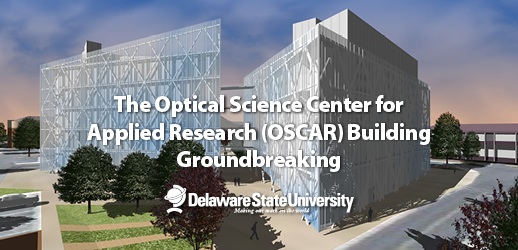
DSU Breaks Ground for New Optics Research Building
|
|
The full 70,000 square foot building will add the capability of expanded optical laboratories, computational laboratories, class 100/1000 clean rooms, expanded office areas and a 150-seat auditorium-style classroom. In its design to promote scholarly interaction, interdisciplinary research and innovation, the building will also include open interaction spaces, meeting rooms and offices, a multipurpose meeting space and departmental offices.


 Gov. Jack Markell said that the new Optics Building will be an investment in the future of the state.
Gov. Jack Markell said that the new Optics Building will be an investment in the future of the state.